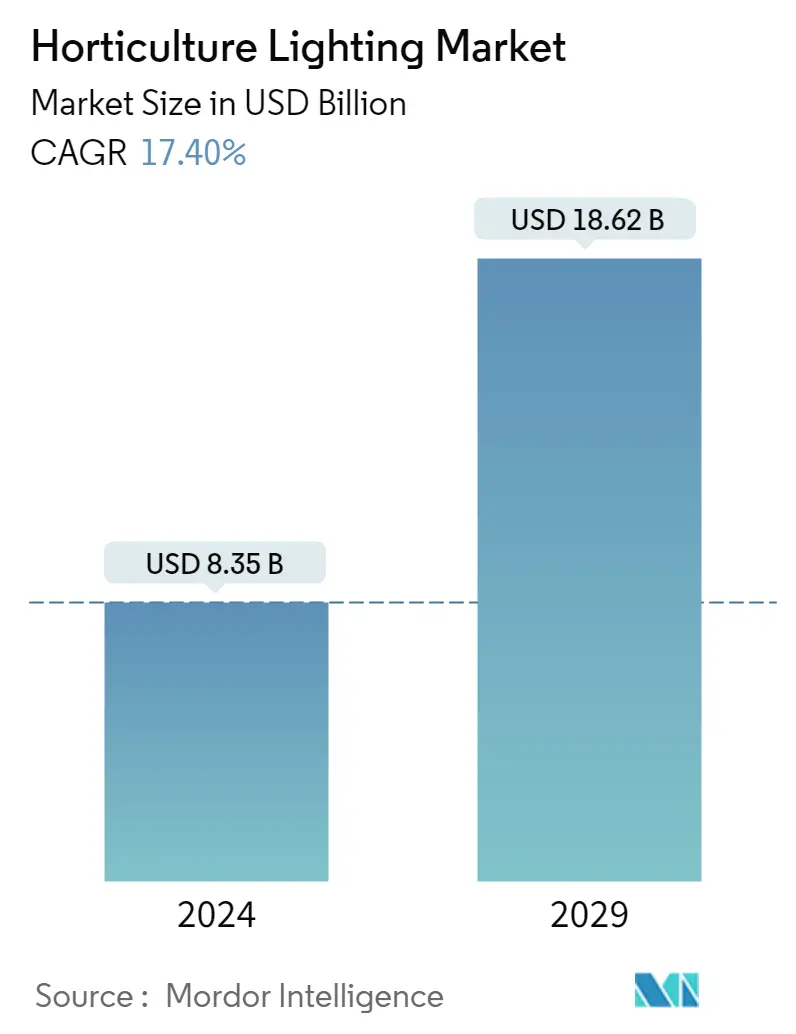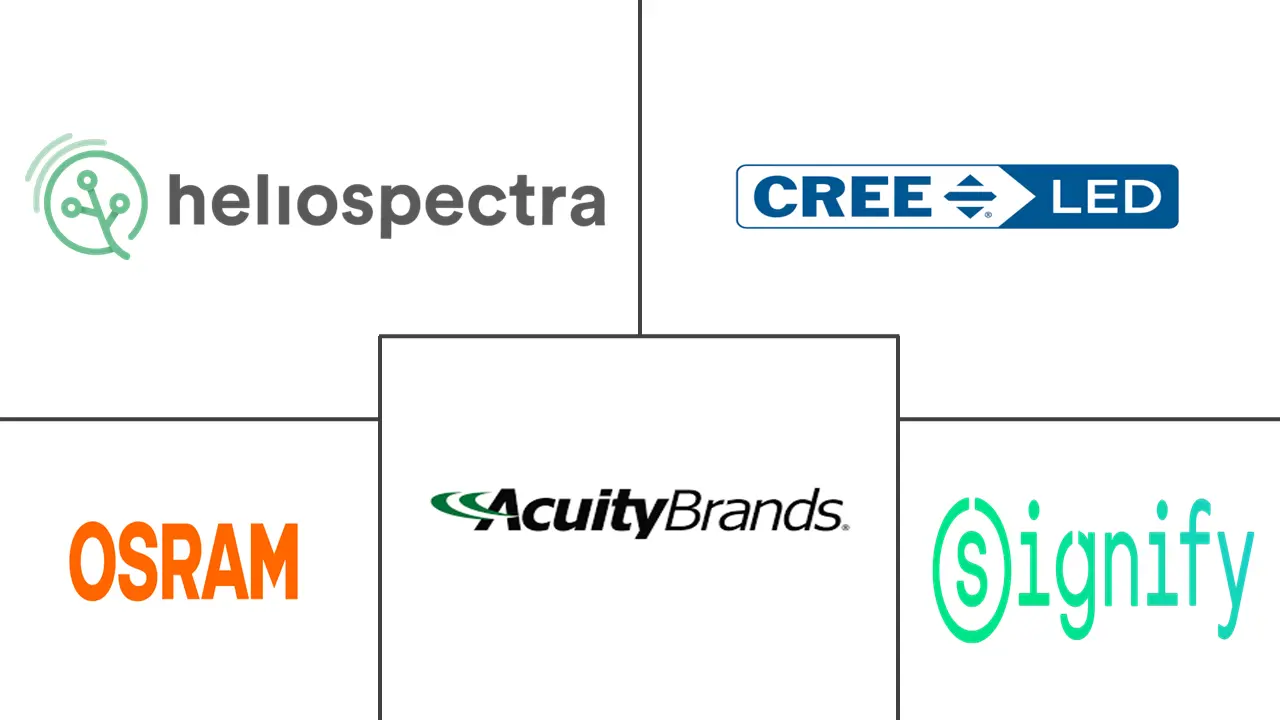Market Size of Horticulture Lighting Industry

| Study Period | 2019 - 2029 |
| Market Size (2024) | USD 8.35 Billion |
| Market Size (2029) | USD 18.62 Billion |
| CAGR (2024 - 2029) | 17.40 % |
| Fastest Growing Market | Asia Pacific |
| Largest Market | Europe |
Major Players
*Disclaimer: Major Players sorted in no particular order |
Need a report that reflects how COVID-19 has impacted this market and its growth?
Horticulture Lighting Market Analysis
The Horticulture Lighting Market size is estimated at USD 8.35 billion in 2024, and is expected to reach USD 18.62 billion by 2029, growing at a CAGR of 17.40% during the forecast period (2024-2029).
Effective spectral distribution of light is essential for the growth of plants. Increasing awareness about the same is expected to propel the demand for horticulture lights. The horticulture lighting industry is experiencing rapid growth as the future of scalable food production becomes an increasingly critical concern. Growers seek high-quality sunlight substitutions as crucial components in modern indoor agricultural environments. To address these needs, LED manufacturers fiercely compete to develop horticulture lighting solutions that can effectively improve plant cultivation.
- Weather change is one of the most significant causes augmenting the demand for horticulture lights to maintain a controlled agricultural environment. Horticulture lights help save energy with new lighting solutions and crop yield. Such qualities of horticulture lights and their rising awareness among farmers will likely gain momentum for the market studied over the forecast period. An increase in food suppliers and farm start-ups is expected to increase the adoption of horticulture lights such as LED.
- The significance of LED lighting applications in the horticultural sector is growing with the rising trend of vertical and indoor farming applications. With controllable illuminance and spectrum, LED is widely used in cultivation for several crops, such as tomatoes, herbs, greens, and cucumbers. A South Korean agriculture cultivator, Farm8, utilizes the technology of LEDs for the plant's growth. With this unique technology, a plant can be grown in around 35 days compared to the time taken (i.e., 50 days) by a plant to grow outdoors.
- The growing population worldwide is generating additional demand for food, which is challenging and can be met through conventional farming. However, several advancements in horticulture lighting enable indoor agriculture to increase crop yield efficiently. Horticulture light is the primary source of indoor agriculture in the partial or absence of natural light sources. Major companies such as Signify (Philips Lighting) established GrowWise, a city farm facility focusing on cultivating various crops, such as leafy vegetables, strawberries, and many more. To increase crop production in its indoor farming facilities, the company has planned to utilize LED horticulture lights.
- Several companies are introducing new products for horticulture lighting. For instance, in January 2023, Polymatech unveiled the next-gen horticulture LED grow light. Launching new horticulture LED products includes monochromatic LEDs and RavayeTM full-spectrum packages and modules. These new products are focused on providing enhanced vertical farming and greenhouse and lighting for horticulture applications. They set a standard with their broader light spectrum for healthier and faster plant growth, improved farming environments, and reduced lighting system costs.
- The coronavirus epidemic has had a relatively slighter impact on the industry due to oversupply in the past few years. Only the packaging companies suffered slightly from a lack of workforce during the lockdowns. Therefore, it is likely to see little changes in the LED industry's ecosystem and supply chain structure.
- UVC LED suppliers used to rely on increased efficiency and competitive prices to receive branding contrast. However, affected by the coronavirus epidemic, UVC LED with disinfecting function is becoming a standard component for home appliances, making its way to the mainstream market. Nevertheless, the COVID-19 pandemic does drive more application opportunities for the LED industry, including germicidal UVC LEDs, social distance-controlling infrared sensors, and horticulture lighting to back food supply.
